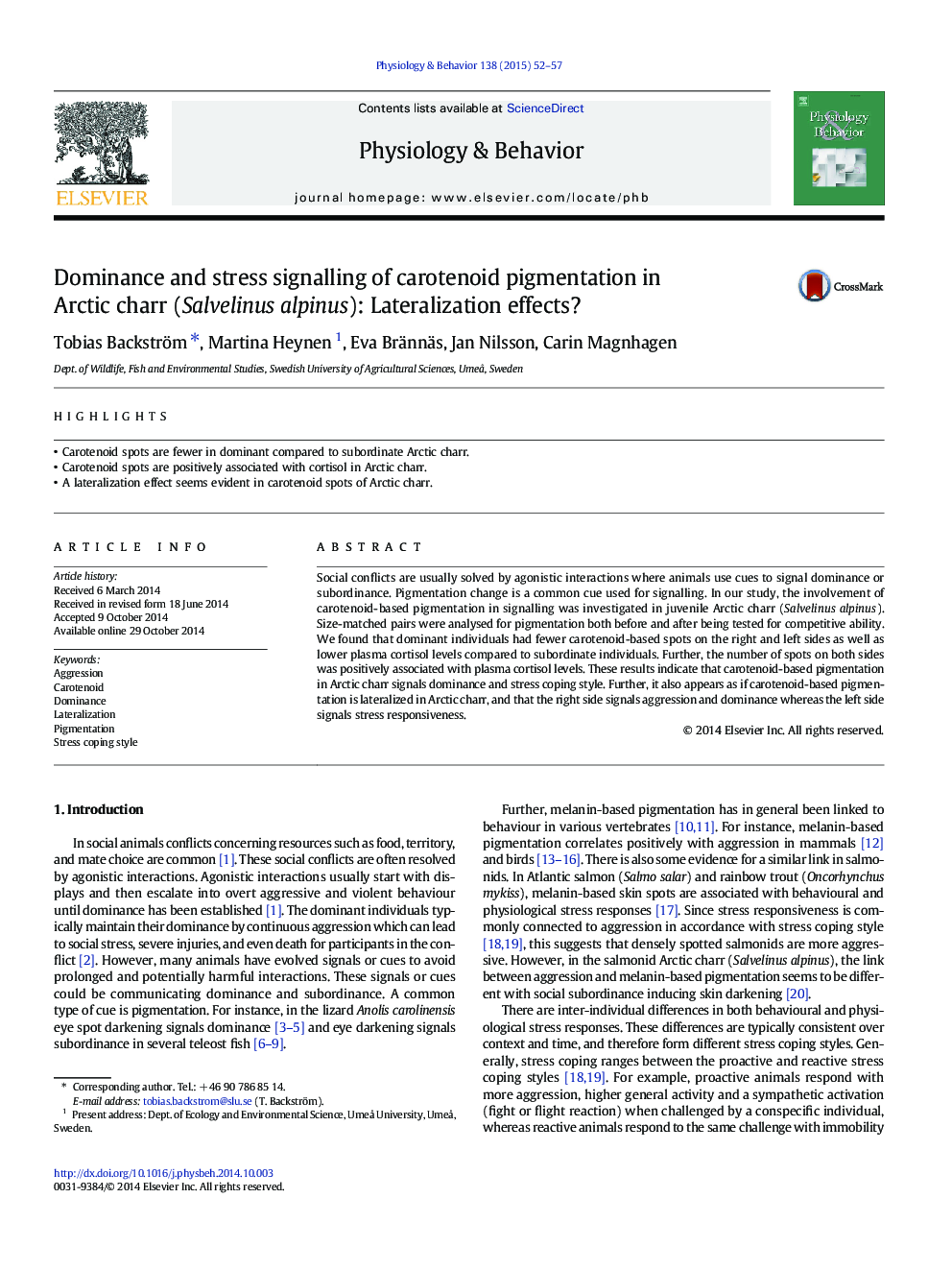| Article ID | Journal | Published Year | Pages | File Type |
|---|---|---|---|---|
| 2844191 | Physiology & Behavior | 2015 | 6 Pages |
Abstract
Social conflicts are usually solved by agonistic interactions where animals use cues to signal dominance or subordinance. Pigmentation change is a common cue used for signalling. In our study, the involvement of carotenoid-based pigmentation in signalling was investigated in juvenile Arctic charr (Salvelinus alpinus). Size-matched pairs were analysed for pigmentation both before and after being tested for competitive ability. We found that dominant individuals had fewer carotenoid-based spots on the right and left sides as well as lower plasma cortisol levels compared to subordinate individuals. Further, the number of spots on both sides was positively associated with plasma cortisol levels. These results indicate that carotenoid-based pigmentation in Arctic charr signals dominance and stress coping style. Further, it also appears as if carotenoid-based pigmentation is lateralized in Arctic charr, and that the right side signals aggression and dominance whereas the left side signals stress responsiveness.
Related Topics
Life Sciences
Biochemistry, Genetics and Molecular Biology
Physiology
Authors
Tobias Backström, Martina Heynen, Eva Brännäs, Jan Nilsson, Carin Magnhagen,
